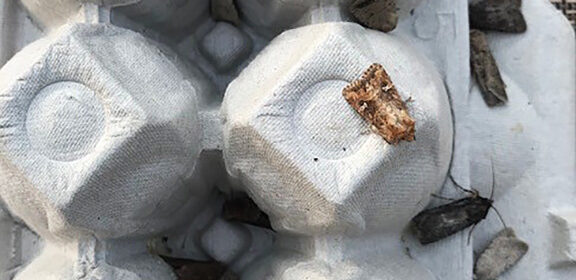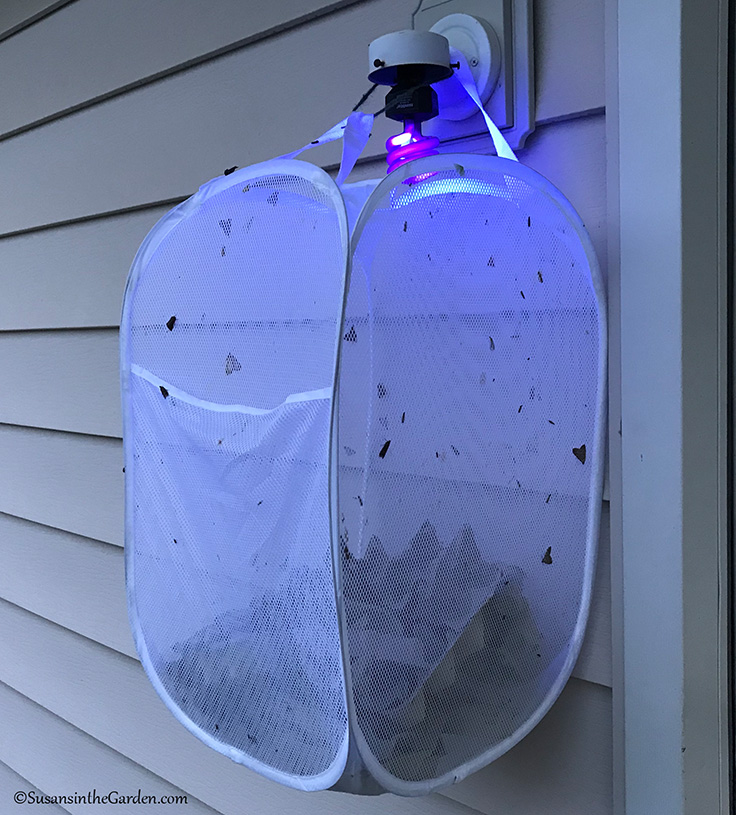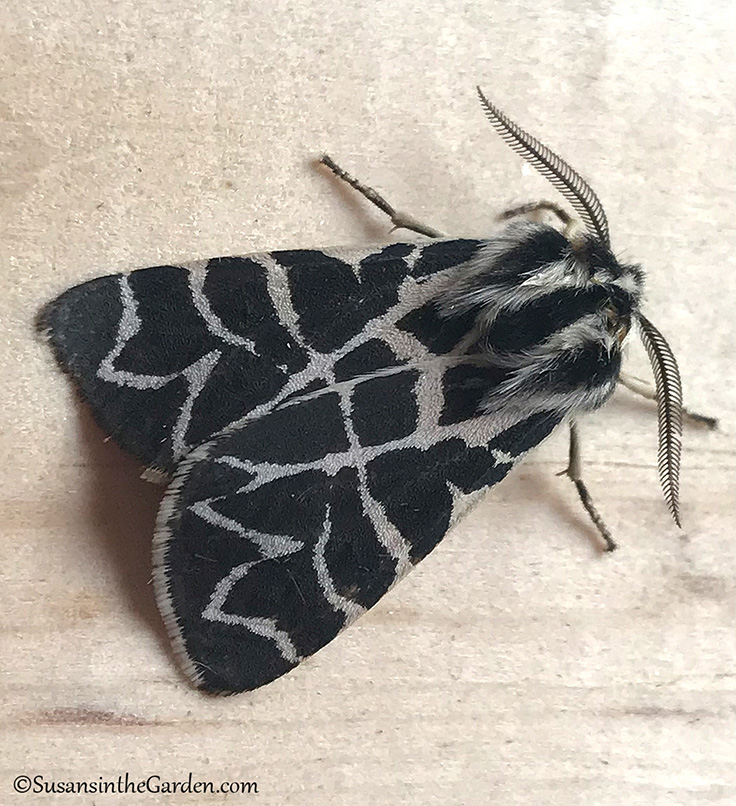Column: Backyard Mothing

I suppose you did a double-take when you read the title of this post! Yup, backyard mothing is a “thing” and it’s something I became involved in a couple of years ago.
Backyard mothing involves catching moths in a humane trap, studying them, maybe photographing them, and then letting them go. My column will explain how this all came about. But the message I want to get across to everyone is that this is a fun activity that is so educational!
Here’s my column so you can better understand what I’m talking about. You’ll also find a video I shot about this, underneath it.
by Susan Mulvihill
In the summer of 2020, I needed to take several moth photos for my book, The Vegetable Garden Pest Handbook. My goal was to show gardeners what the adult stage of beet armyworms, cabbage loopers, corn earworms, cutworms and diamondback caterpillars looks like.
There was just one problem: since the majority of moths are nocturnal, how would I accomplish that? Fortunately, a friend introduced me to Carl Barrentine, who in turn introduced me to the fascinating activity known as backyard mothing.
Barrentine is a retired professor who is enthralled with moths and enjoys photographing and documenting his findings. I soon learned how to set up a simple but effective trap for temporarily capturing moths so I could get my photos. It wasn’t long before I became obsessed with the diversity of these amazing insects that we rarely see.
I’m very excited that this year’s mothing season, which typically runs from March to November, is under way and would like to encourage you to begin your voyage “to the dark side,” as Barrentine likes to call it.
Moth traps are inexpensive, simple to set up and a great way to teach both kids and adults about a fascinating part of the insect world. I’ve long been a proponent of getting kids involved in gardening and learning more about the environment, so this is a fantastic educational opportunity.
Here are the supplies you’ll need:
- A white, foldable mesh laundry hamper; they typically cost under 10 dollars
- Empty egg cartons
- A black compact fluorescent lightbulb (CFL)
- 2-ounce clear plastic mini cups, also known as condiment cups, with snap-on lids for temporarily holding the moths
Replace your back porch light with the black CFL bulb and turn it on as dusk approaches. Separate the top half from the bottom of the egg cartons and add several layers of both halves to the hamper before hanging it underneath the light bulb. After moths enter the trap, they will hide or rest in the nooks and crannies of the egg cartons.
The next morning, sort through the egg cartons to see which moths you’ve caught. It’s important to avoid directly handling them. To capture a moth for closer inspection, cover it with a condiment cup, gently tap it in and then snap on the lid. Rest assured that moths don’t bite or sting.
At this point, place the condiment cups into your refrigerator for a few hours to cool down the moths. This will temporarily make them sluggish so you can photograph these beautiful creatures. I like to place them onto a small piece of wood for this purpose.
Once you have your photos, carefully release the moths back into your yard and work on identifying them. There is an excellent phone app called Leps by Fieldguide that is very helpful. “Leps” is an abbreviation of the word “Lepidoptera,” which is the order of insects that includes butterflies and moths. Other resources include the websites bugguide.net and iNaturalist.org, moth groups on Facebook, and the book “Pacific Northwest Insects” by Merrill A. Peterson.
Just like Carl Barrentine, I thoroughly enjoy mothing season because you just never know what you’ll find. He is beginning the sixth year of his mothing project and has found and photographed 807 moth species in south Spokane County. When you consider the fact that there are an estimated 3,000 species in all of the Pacific Northwest, that’s pretty impressive.
Susan Mulvihill is author of “The Vegetable Garden Problem Solver Handbook” and “The Vegetable Garden Pest Handbook.” She can be reached at Susan@SusansintheGarden.com. Watch this week’s video at youtube.com/susansinthegarden.


